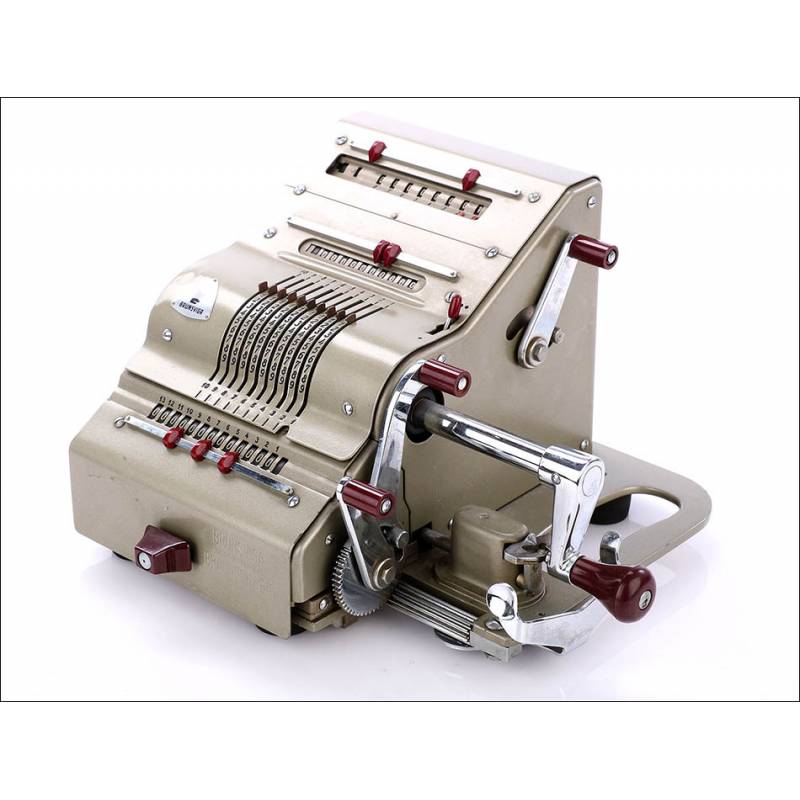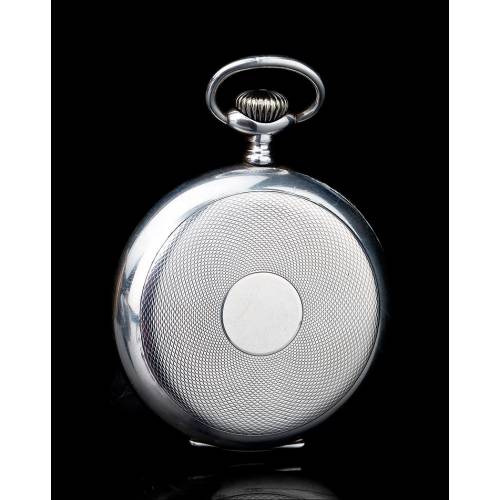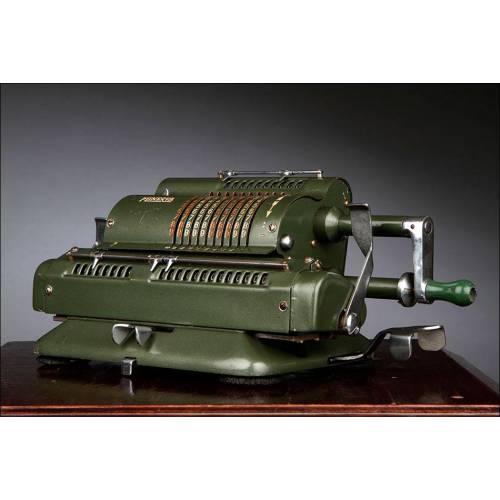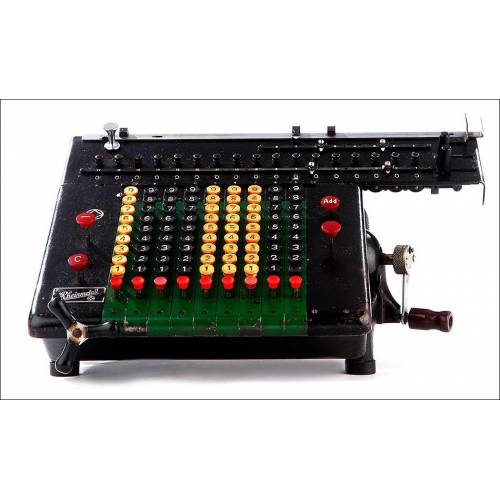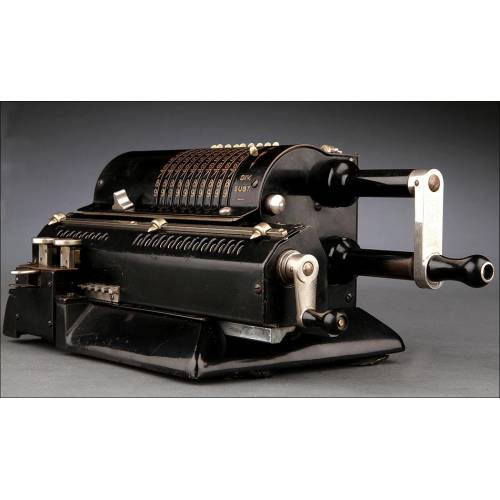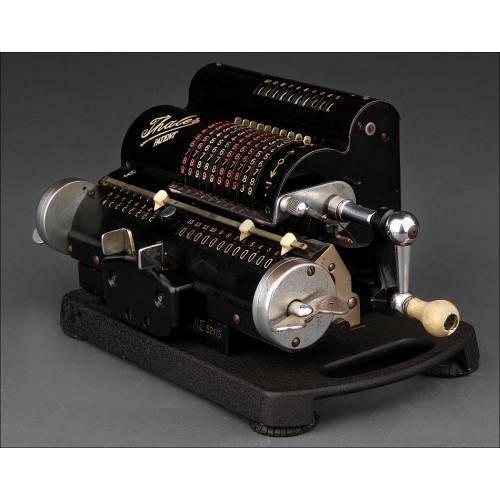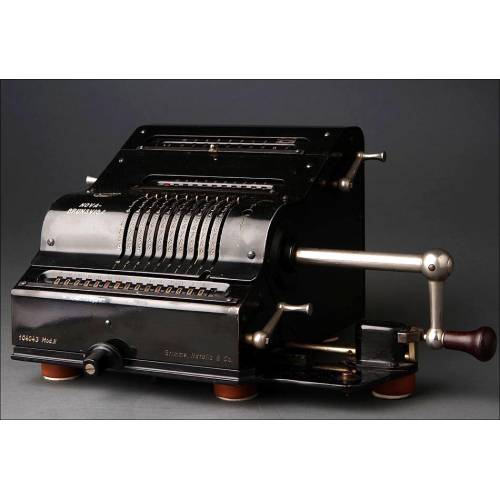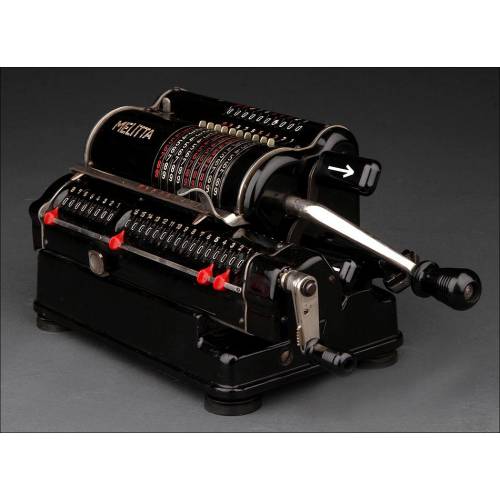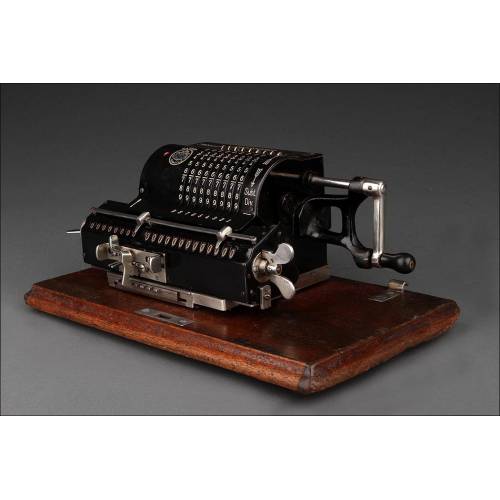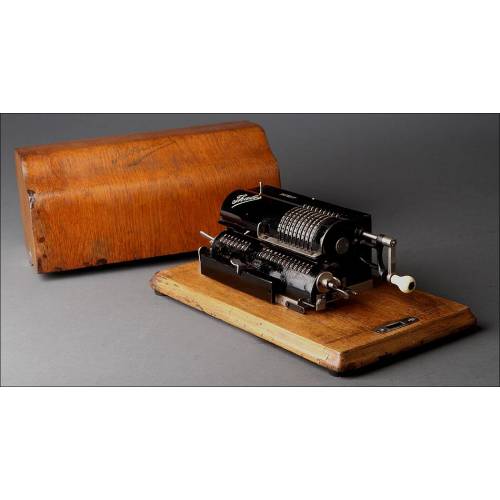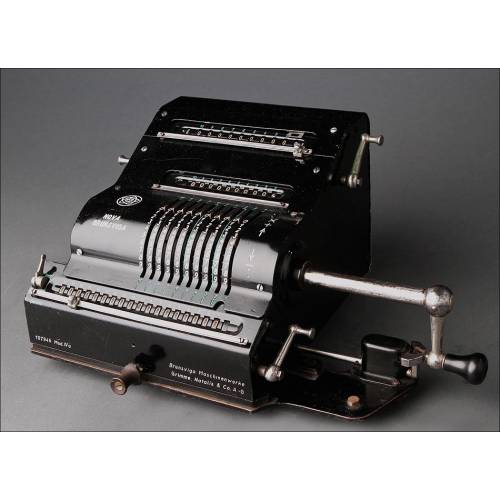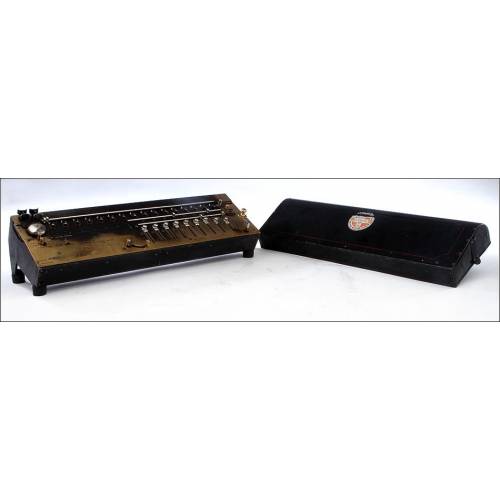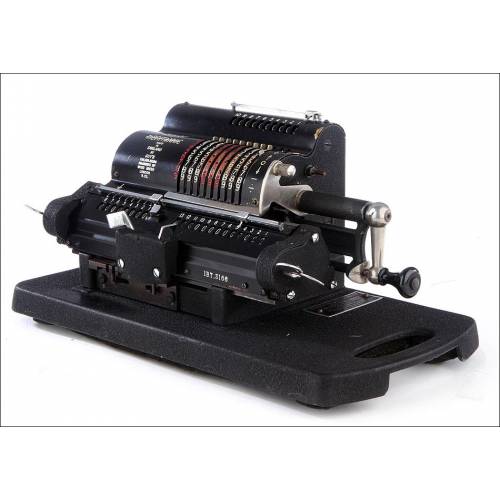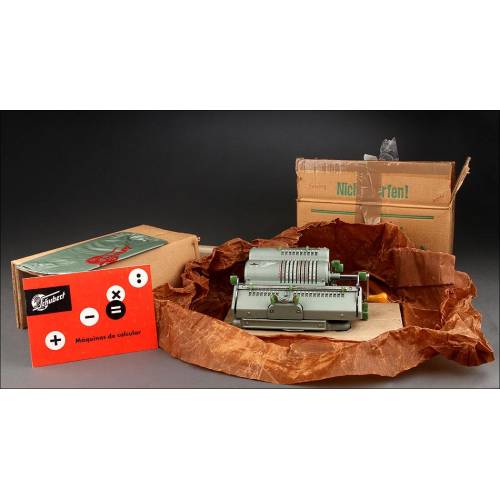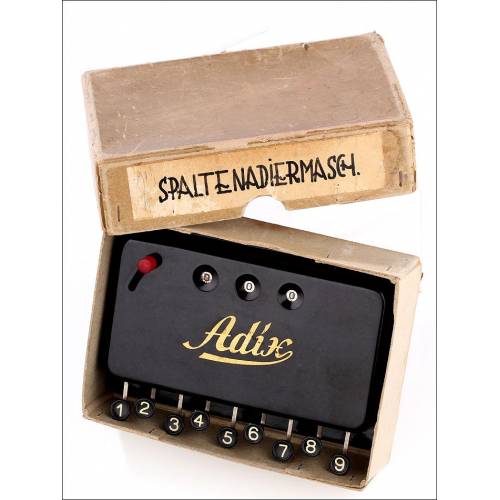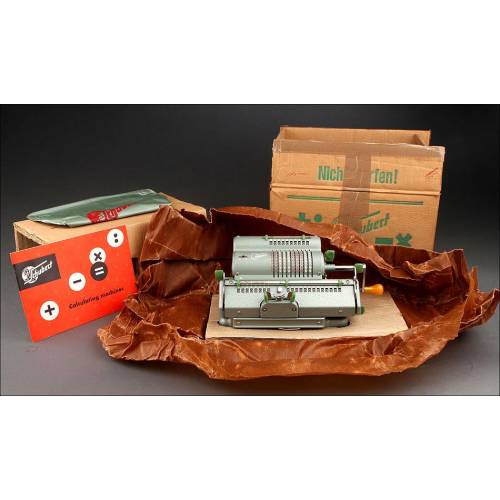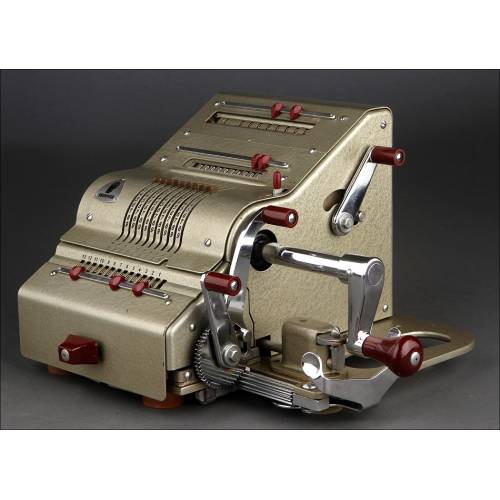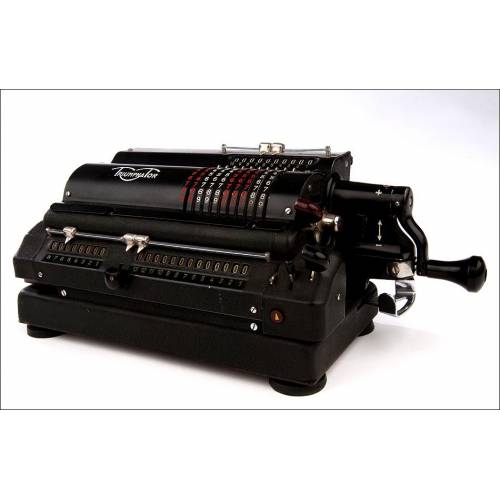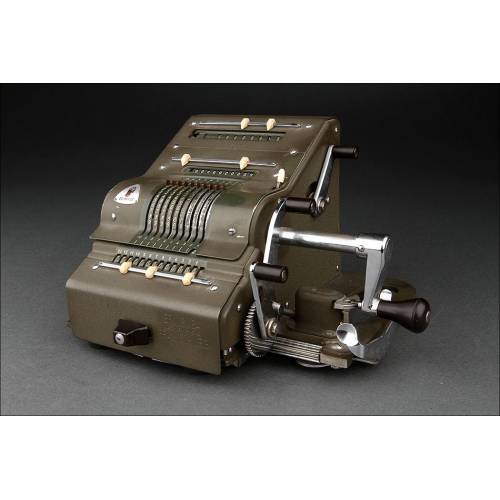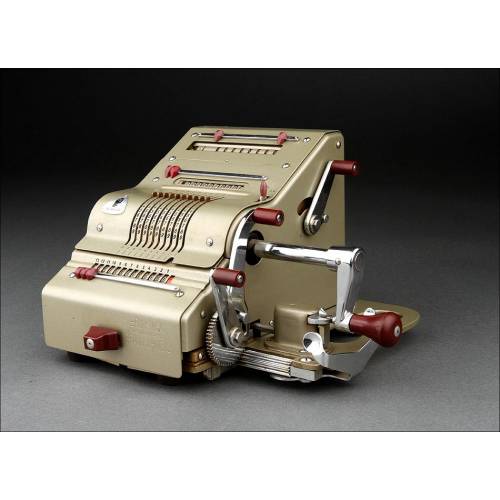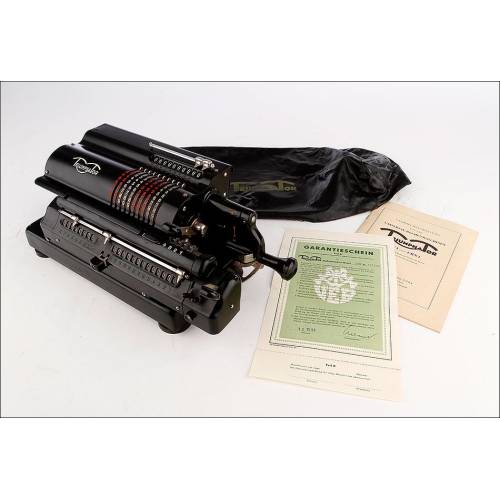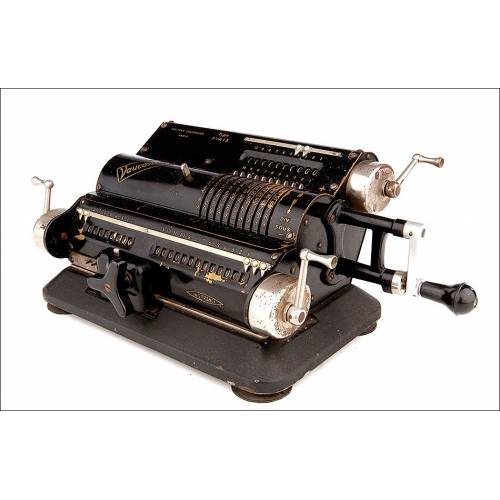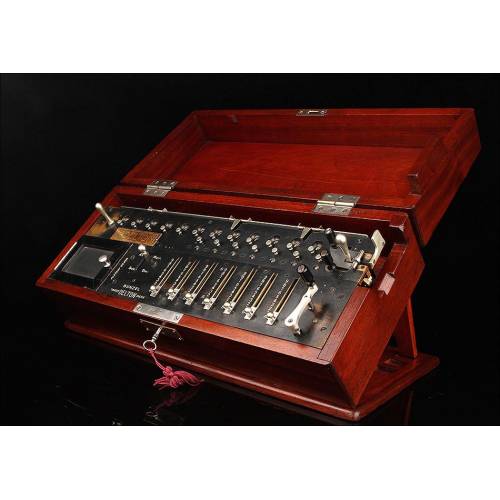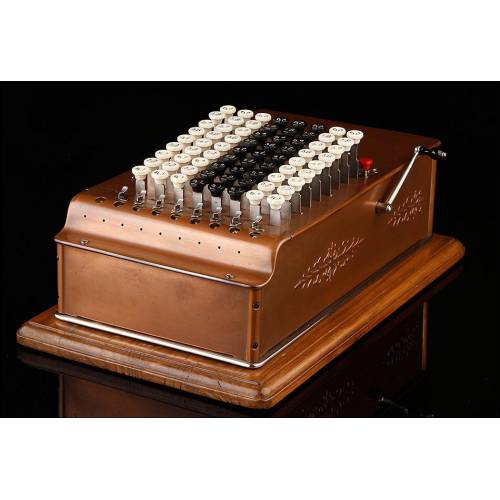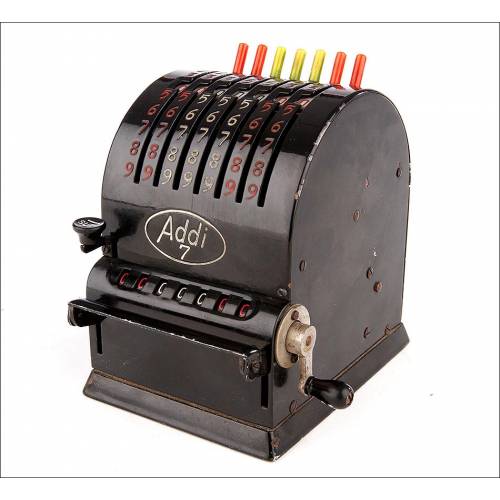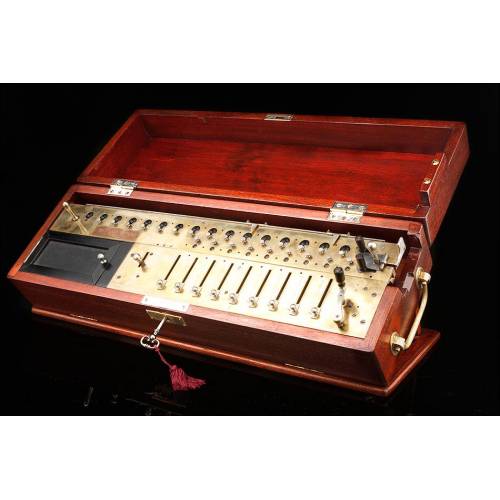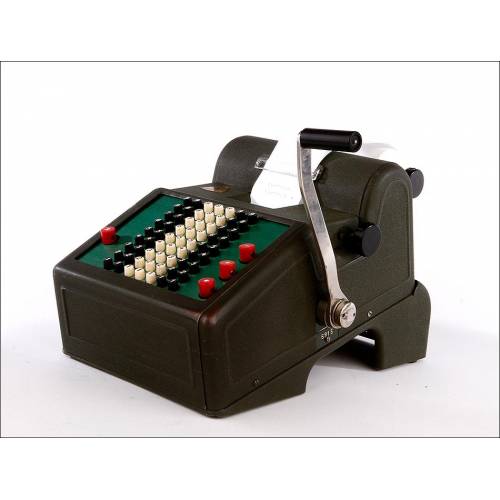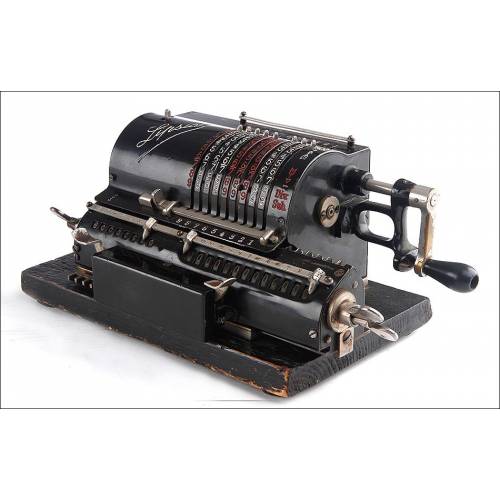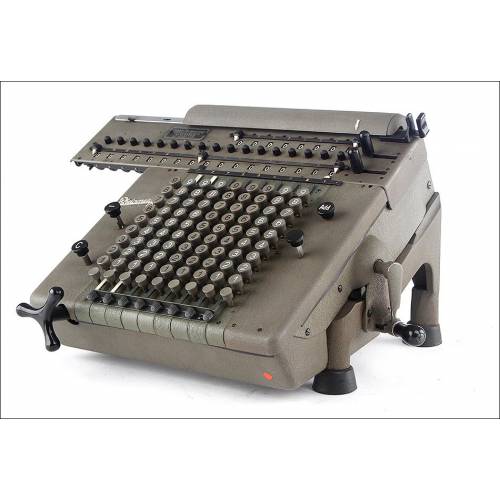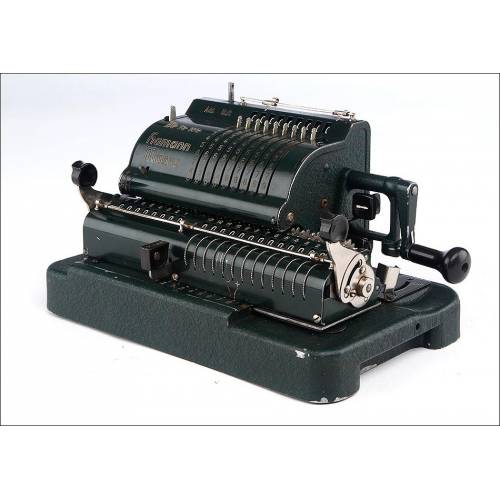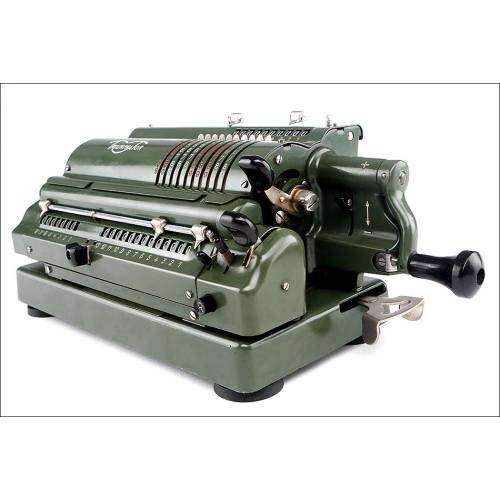C-288
Antique Brunsviga 13K Calculator, 1950's
Stunning antique Brunsviga 13K calculator in great condition. Iconic piece that works perfectly. A pleasure to operate.
Sold!
This striking antique calculator is a Brunsviga 13K, a real classic among the calculating machines made in the first half of the 20th century. The calculator comes from Germany, where it was made by the famous arithmometer manufacturer in the 1950s. It is an iconic piece, a model which became immensely popular for its great quality and its fully reliable results. As well as showing off a great working order, the calculator that we can see in the photographs is in excellent condition: it is a beautiful piece with a great aesthetic and decorative power. The metal casing that covers and protects the complex mechanism bears a sand-grey hammered finish original from the time, in an exceptional condition. The mobile parts are made of chrome-plated metal and are also wonderfully preserved, with no traces of rust or wear. The small levers used to select the digits and the rest of the operating knobs are made of dark-red bakelite, and remain in great condition too. At the front of the machine, to the left of the levers we can see a riveted triangular metal-sheet with the BRUNSVIGA brand name and logo clearly printed on its surface. At the back of the calculator there is another plate, this time painted in a dark red color, with the manufacturers name in white lettering. At the front right corner we can see the brand name again, this time engraved in the metal casing. And last but not least, if we turn the calculator upside down we will find a small metal plate with the model name, Brunsviga 13K, and another plate with an engraved serial number: 13-31355. For its fine look and great working order, this fantastic antique Brunsviga 13K calculator will delight every lover of turn-of-the-century mechanical devices.Brunsviga Calculators History The firm Grimme, Natalis & Co (GNC) was established in 1871 to build sewing machines and domestic appliances at Braunschweig, Germany. In 1892 engineer Franz Trinks was instrumental in securing the manufacturing rights to the Odhner calculator patents. The first machines were built according to W.T. Odhner's 1890 design and were distributed under the brand name "Brunsviga" (Latin for Braunschweig). Trinks continued to develop and refine the Brunsviga calculator over a period of almost 30 years. The "new Brunsviga" range appeared in 1925, and the "13-series" in 1927. Production resumed after the 1939-45 war with a new range of 13-series machines, a motorised version of the stepped-drum machine, and a range of small adding machines. Grimme, Natalis & Co was originally established as a "Commanditgesellschaft auf Aktien". On its fiftieth anniversary in 1921 it became Grimme, Natalis & Co AG. In 1927 the name was changed to "Brunsviga Maschinenwerke Grimme, Natalis & Co AG", and later to just "Brunsviga Maschinenwerke AG" In 1957 Brunsviga entered into an agreement with Olympia Werke AG, which led ultimately to the company being absorbed into Olympia in 1959. Production continued for a time as the Brunsviga Division of Olympia, before coming to an end in the late 1960s. About half a million Brunsviga machines were produced over a period of almost eighty years. The Trinks-Brunsviga calculators work with the pinwheel system developed by W.T. Odhner in the 1870s. It was inspired in turn by the arithmometer designed by Leibniz in the 16th century.

